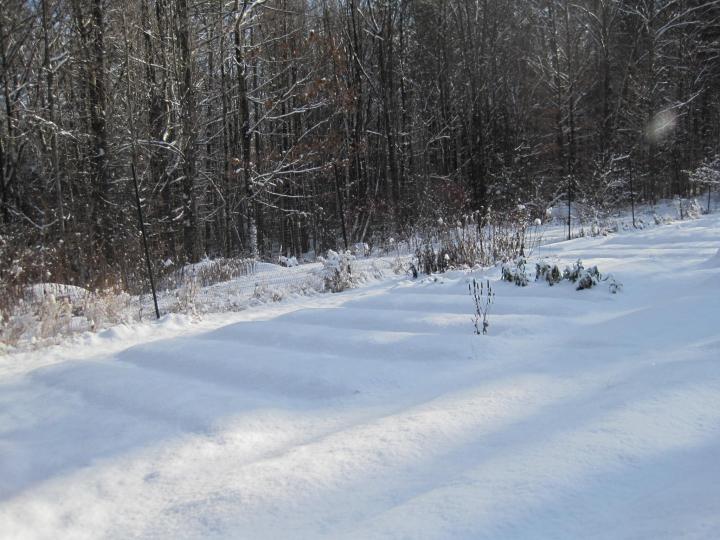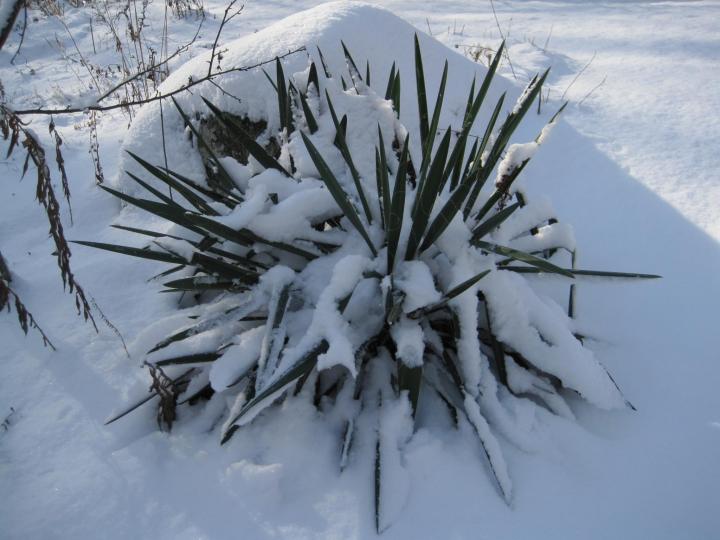Whatever you may think of snow, remember the old saying, “Snow is a poor man’s fertilizer.” Discover five benefits of snow in the yard and garden.
There’s another age-old saying, “A good winter with snow makes all the plants grow.” As it turns out, there are explanations rooted in science to these expressions.
Snow Deliver Nitrogen
Both rain and snow contain nitrogen that plants need, but snow by its nature provides a better delivery method. Nitrogen attaches to snowflakes as the snow falls through the atmosphere. In addition, nutrients are slowly released into the soil as the snow melts. This is especially effective early in the spring when the ground is thawed, allowing nature provides a gentle fertilizer boost to plants!

Snow Insulates Plants
Snow is mostly air surrounded by a little frozen water, and despite how cold it feels to the skin, it is an excellent insulator of the soil and plant roots.
I fear for the perennials when the temperatures drop suddenly before we have enough snow cover to protect the roots. Without snow, very cold temperatures can freeze the soil deeper and deeper. In wintry climates, this could lead to damage of root systems of trees and shrubs. Snow prevents extreme cold temperatures from harming plants.

Snow Protects Against Temperature Fluctuations
Snow protects against against wide temperature fluctuations in the soil. Under that cozy comforter of white, the roots of perennials, bulbs, ground covers, and strawberry plants are protected from the freeze-thaw cycle that can heave tender roots right out of the ground. Without snow, milder temperatures and the sun could warm the soil surface, leading to damage from soil heaving, which can break roots and dry out plant parts.
Snow is Winter Mulch
If you didn’t get around to mulching your garden this past fall, a nice blanket of snow can serve the same purpose! Never remove snow from your yard—it’s Mother Nature at work. Snow cover is valuable winter protection for your expensive trees and shrubs.
If you don’t have a consistent snow cover, of course, do make sure you mulch. In most cases, 2 to 4 inches of mulch, such as straw, pine needles, hay or bark chips, give adequate protection. You can mulch right on top of the snow. It’s better to wait until after temperatures are consistently below freezing to apply the mulch. Applying too early can smother the plant and encourage disease development.
See how to prepare your garden for the winter.
Snow Adds Beauty
Of course, we can all enjoy the beauty of the tree barks and evergreens contrasting against the white backdrop. Everything looks more visible, from ornamental grasses to that bright red cardinal outside your kitchen window.
Dealing with Heavy Snow
Of course, heavy snow can really weigh down branches, especially multi-stemmed shrubs. Otherwise, the weight of the snow can bend branches to the ground, cutting off circulation of food manufactured by the leaves to the roots.
- If possible, in the fall, bundle stems together using burlap or canvas.
- In the winter, take a broom and carefully brush heavy snows from branches as soon as possible but don’t try to remove ice. More damage to the bark probably will occur than if the ice is allowed to melt on its own.
- With young trees, you may also wish to wrap the trunks with a commercial tree wrap to help prevent bark from splitting from temperature extremes.
It be be worthwhile to gently remove the snow from young trees so their tender bark is not gnawed away by rodents. Just be very very careful with a shovel not to cause even the smallest mechanical injury.
Even though snow removal is a back breaking chore, we need the moisture that each snow crystal provides for our gardens. Next time you are out shoveling, remember the benefits of snow and think of butterflies and apple blossoms!
See a guide to snowflake shapes.
Comments